
News |
- Bipole III Debate Continues
- World Environment Day: June 5th
- Join the RBC Blue Water Day Wave: June 10, 2011
- Canada Late to Submit Greenhouse Gas Data
- Recession Lowers Manitoba GHG Emission
- No Gas Fracking Way!
- Province Funds Victoria Beach Erosion Project
- International Day for Biodiversity: May 22, 2011
- 2010 Protected Areas Audit Released
- Recognize Right to Water and Sanitation
- Worst Alberta Oil Spill Since '75
- Moving Planet: September 24, 2011
| Bipole III Debate Continues | 28 May 11 |
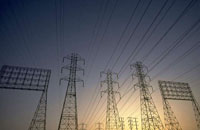 Immediately following announcement of a $4-billion power export deal, Manitoba's opposition Progressive Conservative Leader Hugh McFadyen tabled a leaked internal Manitoba Hydro report from 2005. The report condemned the building of the Bipole III transmission line down the west side of the province.
Immediately following announcement of a $4-billion power export deal, Manitoba's opposition Progressive Conservative Leader Hugh McFadyen tabled a leaked internal Manitoba Hydro report from 2005. The report condemned the building of the Bipole III transmission line down the west side of the province.Manitoba Finance Minister Rosanne Wowchuk responded that switching bipole routes would delay hydroelectric megaprojects in Manitoba's north and jeopardize lucrative power deals. McFadyen has repeatedly vowed that if his party forms government in the October 4, 2011 Manitoba election, he will cancel the longer western route in favour of building the bipole line east of Lake Winnipeg. In late 2007 the governing NDP directed Manitoba Hydro to build down the west side to protect pristine boreal forest on the east side of Lake Winnipeg. A World Heritage Site nomination is being proposed for about one fifth of these boreal lands. Manitoba Hydro president Bob Brennan said the environmental licence application for Bipole III will be filed in fall 2011, perhaps after the October 4 election. The new estimated cost for the bipole project is $3.28 billion. View May 27, 2011 Global News articleView May 27, 2011 Winnipeg Free Press article View May 26, 2011 CBC News article View May 26, 2011 Winnipeg Free Press article View Manitoba Hydro, Bipole III webpage Source:
Winnipeg Free Press
|
|
 Print version Print version |
Top |
| World Environment Day: June 5th | 28 May 11 |
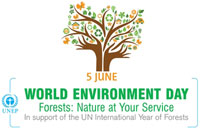 World Environment Day (WED), held annually June 5th since 1973, is a day to stimulate awareness of the environment and enhance political attention and public action.
World Environment Day (WED), held annually June 5th since 1973, is a day to stimulate awareness of the environment and enhance political attention and public action.Established by the United Nations General Assembly in 1972, WED marks the first meeting of the United Nations Conference on the Human Environment, in Stockholm June 5-16 1972. The 2011 theme, 'Forests: Nature at Your Service', underscores the intrinsic link between quality of life and the health of forests and forest ecosystems, while also supporting the 2011 UN International Year of Forests. Thousands of events will be taking place around the globe, emphasizing how individual actions have exponential impact, with activities ranging from school tree-planting drives to community clean-ups, car-free days, photo competitions on forests, bird-watching trips, city park clean-up initiatives, exhibits, green petitions, nationwide green campaigns and much more. Anyone can register an event on the WED website. Each of these individual actions, when taken collectively, will go a long way to securing important forests services for generations to come. View United Nations Environment Programme webpageView May 27, 2011 The Independent article View May 26, 2011 National Post article View May 25, 2011 Global Action Plan press release View May 2, 2011 United Nations Environment Programme press release (PDF) Source:
United Nations Environment Programme
|
|
 Print version Print version |
Top |
| Join the RBC Blue Water Day Wave: June 10, 2011 | 28 May 11 |
 June 10, 2011 is the 2nd annual, Royal Bank of Canada (RBC) Blue Water Day, when RBC publicly celebrates its support for water. The goal for 2011 is an online wave of support in a virtual sports stadium created on Facebook.
June 10, 2011 is the 2nd annual, Royal Bank of Canada (RBC) Blue Water Day, when RBC publicly celebrates its support for water. The goal for 2011 is an online wave of support in a virtual sports stadium created on Facebook.To participate, simply upload your photo into a blue wave avatars, and include a message about water if you're so inclined. For every seat that's filled in the stadium, RBC will donate $1 to the World Wildlife Fund, up to $100,000, so the WWF-Canada can protect water, the world's most precious natural resource. The RBC Blue Water Project is a 10-year, $50 million global commitment to protect freshwater. Launched in 2007, this is the most ambitious philanthropic program in RBC's history. RBC has pledged more than $28 million in charitable grants to 400+ organizations around the world. The fund promotes responsible water use with employees and clients, and supports initiatives that encourage growth of water-related businesses. View May 9, 2011 Royal Bank of Canada press releaseView RBC Blue Water Project facebook page View RBC Blue Water Project YouTube page View May 12, 2011 Brandon Sun article View Council of Canadians, Water web page Source:
Royal Bank of Canada
|
|
 Print version Print version |
Top |
| Canada Late to Submit Greenhouse Gas Data | 23 May 11 |
 Canada was the only nation to submit late emissions data as required by international law under the United Nations Framework Convention on Climate. Environment Canada claims the report was final, but was not been submitted because of the 2011 Canadian General Election.
Canada was the only nation to submit late emissions data as required by international law under the United Nations Framework Convention on Climate. Environment Canada claims the report was final, but was not been submitted because of the 2011 Canadian General Election."If the Japanese can pull it together in the midst of a devastating natural disaster, then I don't know what excuse the government of Canada could have for failing to produce it on time," said Graham Saul, Executive Director of Climate Action Network Canada. The data, which is required annually, but reports 2009 emissions, allows government officials and scientists to measure progress in reducing pollution, and whether individual countries are meeting their Kyoto Protocol targets. The Canadian data was finally released May 18, 2011, and shows that Canada had reduced its overall emissions by 6%, resulting from plant closures due to the economic recession, and a lessened reliance on coal. Canadian emissions, however, have grown faster than in any other G8 country that signed Kyoto, and remain 23% above our 2012 Kyoto commitment (of 6% below 1990 levels). Emissions solely from Canada's oilsands grew by 40% between 2005 and 2009. View May 19, 2011 CBC News articleView May 18, 2011 Environment Canada report View May 11, 2011 Postmedia News article View United Nations Framwork Convention on Climate, National Inventory Submissions 2011 webpage View Manitoba Wildlands Climate Change Canada Initiatives page Source:
Montreal Gazzette, Environment Canada 2009 National Inventory Reports
|
|
 Print version Print version |
Top |
| Recession Lowers Manitoba GHG Emission | 23 May 11 |
 Environment Canada's National Inventory Report shows Manitoba 2009 greenhouse-gas (GHG) emissions declined 6.3 per cent over 2008 emissions to 20.3 mega-tonnes (Mt). This was just slightly ahead of the national average drop in GHG emissions during 2009. The global recession and reduced use of coal are primarily responsible for the decline.
Environment Canada's National Inventory Report shows Manitoba 2009 greenhouse-gas (GHG) emissions declined 6.3 per cent over 2008 emissions to 20.3 mega-tonnes (Mt). This was just slightly ahead of the national average drop in GHG emissions during 2009. The global recession and reduced use of coal are primarily responsible for the decline.Nearly half the emissions reduction are due to three Manitoba large emitters:
In 2008, the Manitoba government legislated its Kyoto goal - a 6% reduction in emissions below 1990 levels must be met by December 31, 2012. Manitoba's 2009 emissions are still nearly 10% above 1990 levels. Manitoba Conservation Minister Bill Blaikie admitted it will be a challenge for Manitoba to meet its Kyoto target, stating: "We won't get there incrementally. We're likely going to need to make some significant changes. We're going to need some big ideas." GHG emissions data for Manitoba for other high emission sectors is still based on estimates and projections. View May 17, 2011 Environment Canada reportView May 17, 2011 Winnipeg Sun article View May 17, 2011 Manitoba Government News Release View May 17, 2011 Winnipeg Free Press article View United Nations Framwork Convention on Climate, National Inventory Submissions 2011 webpage View Manitoba Wildlands Climate Change Manitoba Initiatives page Source:
Winnipeg Sun, Environment Canada
|
|
 Print version Print version |
Top |
| No Gas Fracking Way! | 23 May 11 |
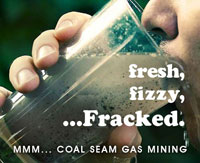 New scientific studies are placing natural gas extraction via "fracking" - a method to create fractures that extend from a borehole into rock formations - under fire.
New scientific studies are placing natural gas extraction via "fracking" - a method to create fractures that extend from a borehole into rock formations - under fire.A May 2011 Duke University study found that methane levels in private water wells are, on average, 17 times higher when within 1,000 yards of a natural gas drilling site. The study was instantly criticized by the natural gas industry, citing lack of baseline reference data. Ironically, however, the natural gas companies have much of the needed baseline data, but refuse to release it. "I asked them for the data and they wouldn't share it," said Robert Jackson, one of the Duke study authors. Several other recent reports have warned of the dangers of natural gas fracking. A March 2011 Cornell University Study estimated the greenhouse gas emissions associated with fracked gas are 20% to 50% higher than emissions from coal. A January 2011 research study by the U.S. Environmental Protection Agency showed that methane releases from the hydraulic fracturing of shale gas were 9,000 times higher than previously reported. The release of the studies could immediately shape the increasingly intense public debate over drilling and hydraulic fracturing. France is on track to be the first country to ban hydraulic fracking. Quebec implemented a partial ban, pending further study, following recommendations of a government commissioned report. A provincial review of fracking is scheduled in Nova Scotia. View May 17, 2011 ProPublica articleView May 11, 2011 Financial Times article View May 9, 2011 Proceeding of the National Academy of Sciences article View April 20, 2011 Tyee article View April 16, 2011 Real Climate article View April 11, 2011 Council of Canadian article View April 4, 2011 Government of Nova Scotia press release View March 13, 2011 Cornell Study (PDF) Source:
ProPublica, Council of Canadians
|
|
 Print version Print version |
Top |
| Province Funds Victoria Beach Erosion Project | 23 May 11 |
 The Manitoba government is giving Victoria Beach municipality $100,000 to improve the beachfront through a process call aggradation to create an artificial reef about 100 metres long. It is the first time this process has been tried on the Lake Winnipeg shoreline.
The Manitoba government is giving Victoria Beach municipality $100,000 to improve the beachfront through a process call aggradation to create an artificial reef about 100 metres long. It is the first time this process has been tried on the Lake Winnipeg shoreline."It is a fabric device that you fill with sand and it amounts to an artificial reef," says Tom Farrell who is the Reeve of the RM of Victoria Beach, who said he learned about this technique searching the internet. Stuart Juzda, a local resident who is in favour of erosion control, but is worried about the impact on the public beach, remains sceptical of the new technique. "You don't simply do research on the internet to see whether or not it's worth attempting," says. "Rather you actually take a serious look at the project itself before you spend the money." The municipality is hiring consultants to design and construct the aggradation project, and plan to create a community shoreline advisory committee to hold public meeting on shoreline erosion control structures, beach preservation and related issues. Manitoba Water Stewardship’s Shoreline Erosion Technical Committee will monitor to evaluate the project’s success. Erosion of the shoreline has become a contentious subject at the resort area, about 100 kilometres northeast of Winnipeg. A controversial proposal to a build a massive rock erosion barrier along the King Edward and Alexander beaches was shelved following public outcry, and replaced with a temporary erosion barrier. The province had to issue a stop-work order against a controversial rock wall being built by a group of cottagers along Arthur Beach, and the matter is now before the Courts. View April 28, 2011 Winnipeg Free Press articleView April 28, 2011 Government of Manitoba News Release View April 27, 2011 CBC News article View April 27, 2011 CTV News article View Preserving Victoria Beach blog View Manitoba Wildlands Land Use Planning Reviews page Source:
Government of Manitoba, CTV
|
|
 Print version Print version |
Top |
| International Day for Biodiversity: May 22, 2011 | 23 May 11 |
 Groups & organizations in every province and territory in Canada will be holding outreach and education activities for International Day for Biodiversity on May 22, 2011.
Groups & organizations in every province and territory in Canada will be holding outreach and education activities for International Day for Biodiversity on May 22, 2011.In Winnipeg, the Living Prairie Museum is partnering with schools to plant pockets of butterfly gardens. Each garden will have at least ten indigenous tall grass prairie plant species beneficial to butterflies and caterpillars. In addition, Winnnipeg and area gardeners can purchase native prairie plants to their yards from the Living Prairie Museum, located at 2795 Ness Avenue, Winnipeg, Manitoba, on Saturday May 21 & Sunday May 22 from 10am-4pm, and every Sunday till June 26 between 12-4pm. The United Nations proclaimed May 22 International Day for Biological Diversity (IDB) in 1993 to increase understanding and awareness of biodiversity issues, and to commemorate the adoption of the text that formed the Convention on Biological Diversity. The 2011 theme for Biodiversity Day is Forest Biodiversity to coincide with the United Nations declared 2011 International Year of Forests. View Canadian Environmental Network, "2011 International Day for Biodiversity Events" webpageView Living Prairie Museum webpage View Prairie Flora, "2011 Plant Sales, Living Prairie Museum, 2795 Ness Avenue" View Biodiversity Canada, 2011 International Day for Biological Diversity View Convention on Biological Diversity, 2011 International Day for Biological Diversity View United Nations, 2011 International Year of the Forests Source:
Canadian Environmental Network
|
|
 Print version Print version |
Top |
| 2010 Protected Areas Audit Released | 14 May 11 |
 Manitoba Wildlands has released the annual Manitoba Protected Areas Aduit for 2010.
The Audit includes actions by the government regarding establishment of protected areas in Manitoba, and shows the regulatory steps taken.
Manitoba Wildlands has released the annual Manitoba Protected Areas Aduit for 2010.
The Audit includes actions by the government regarding establishment of protected areas in Manitoba, and shows the regulatory steps taken.During 2010 two new parks were established in natural region 1a, for a combined total of 610,260 hectares of new protected lands and waters. A small addition totaling 1600 hectares was made in the transition of Birch island from Park Reserve to Park. "While we saw two new protected areas established during 2010, Manitoba's forested boreal regions continue to lack protected areas. And there continues to be no new protected lands in the scope of the future world heritage site on the east side. 2010 was another year when the work plan for intended new protected areas was not fulfilled," commented Gaile Whelan Enns, director of Manitoba Wildlands. Release of the Protected Areas Audit is followed by the annual protected areas grade for Manitoba. View Manitoba Wildlands' 2010 Protected Areas Audit (PDF)View Manitoba Wildlands' 2010 Protected Areas Audit - Summary (PDF) Source:
Manitoba Wildlands
|
|
 Print version Print version |
Top |
| Recognize Right to Water and Sanitation | 14 May 11 |
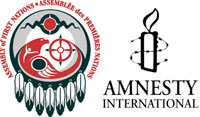 The Assembly of First Nations (AFN), Amnesty International Canada and the Council of Canadians are calling The Canadian Government and all political parties to recognize explicitly the human right to water and sanitation and to ensure that Canada meets its obligations in upholding these rights for people in Canada.
The Assembly of First Nations (AFN), Amnesty International Canada and the Council of Canadians are calling The Canadian Government and all political parties to recognize explicitly the human right to water and sanitation and to ensure that Canada meets its obligations in upholding these rights for people in Canada."Canada should recognize that clean, drinkable water and sanitation are basic human rights," said Amnesty International Canada Secretary General Alex Neve. "The United Nations has already recognized water and sanitation as a human right, which means that every government must now come up with a plan of action based on the 'obligation to respect, protect and fulfill' these rights," said Council of Canadian chairperson Maude Barlow. AFN National Chief Shawn A-in-chut Atleo stated: "First Nations have inherent rights to water in their traditional territories and these rights were never given up. First Nation leaders have called for Canada to respect the Aboriginal and Treaty right to clean drinking water and want to work in partnership with the government on this priority, consistent with the principles of the UN Declaration on the Rights of Indigenous Peoples." View May 7, 2011 Winnipeg Free Press articleView April 29, 2011, April 16, 2011 Rabble.ca articles View April 28, 2011 AFN/ Amnesty Canada/ Council of Canadians Press Release View Council of Canadians "Five things you should know about Canada's position on the right to water" Source:
AFN/ Amnesty Canada/ Council of Canadians
|
|
 Print version Print version |
Top |
| Worst Alberta Oil Spill Since '75 | 14 May 11 |
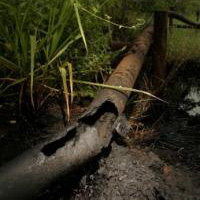 28,000 barrels of oil spilled Friday April 29th from a 45-year-old pipeline owned by Plains Midstream Canada Rainbow pipeline, located in the Peace River region of Alberta, near the Lubicon Cree Nation community of Little Buffalo. Regulators did not report the spill, the largest in Albertan history since 1975, until after the May 2nd, 2011 Canadian election.
28,000 barrels of oil spilled Friday April 29th from a 45-year-old pipeline owned by Plains Midstream Canada Rainbow pipeline, located in the Peace River region of Alberta, near the Lubicon Cree Nation community of Little Buffalo. Regulators did not report the spill, the largest in Albertan history since 1975, until after the May 2nd, 2011 Canadian election."The company and the Alberta Energy Resources Conservation Board have given us little information. What we do know is that the health of our community is at stake," said Lubicon Chief Steve Nosky. In the wake of the disaster First Nations across Canada have expressed their solidarity with the people of Little Buffalo. "We need immediate action and we are also calling for an independent investigation into this incident. We have a responsibility to protect Mother Earth and the traditional hunting and trapping territories of First Nations. This is a clear demonstration as to why we need plans in place to deal with future disasters," said Assembly of First Nations National Chief Shawn A-in-chut Atleo. Dene National Chief Bill Erasmus stated: "The Dene have always been fearful of a possible break in a pipeline such as this. Therefore the Dene Nation will support the Lubicon Cree Nation and will continue to follow and monitor this environmental catastrophe." "What this demonstrates is that oil pipelines will break and leak. Clearly this will add to the immense opposition from northern BC residents who agree that the risks of Enbridge's Northern Gateway Pipeline project are not worth sacrificing the environment or local communities," stated Carrier Sekani Tribal Council Chief David Luggi. View May 7, 2011, May 6, 2011, May 6, 2011, May 5, 2011 Indigenous Peoples Issues & Resources articlesWatch May 5, 2011 APTN video View May 4, 200 United Press International article View Manitoba Wildlands Aboriginal Court Cases & Consultations page Source:
Indigenous Peoples Issues & Resources
|
|
 Print version Print version |
Top |
| Moving Planet: September 24, 2011 | 14 May 11 |
 350.org has just announced their next big global day of climate action. It's called Moving Planet.
350.org has just announced their next big global day of climate action. It's called Moving Planet.Moving Planet is a worldwide rally to demand solutions to the climate crisis—a single day to move away from fossil fuels. On September 24th, 2011 people in countries literally all around the world will organize thousands of events with a common theme: moving the world beyond fossil fuels. In Sao Paolo, Brazil hundreds of activists will "take back" a viaduct that is locally notorious as a symbol of bad auto-centric traffic planning. In Johannesburg, South Africa, youth will join hands with trade union members and call for an end to coal mining and jobs training programs for transitioning miners. Check out the Moving Planet map to see if there's an event planned near you—and, if not, plan one. Come on bike, on skates, on a board, or just on foot. Come with your neighbors and your friends, your family and your co-workers. Come be part of something huge. View Moving Planet websiteView May 7, 2011 Good Magazine article View April 28, 2011 350.org blog post View Manitoba Wildlands Addressing Climate Change page Source:
Moving Planet
|
|
 Print version Print version |
Top |


 RSS Feeds:
RSS Feeds: